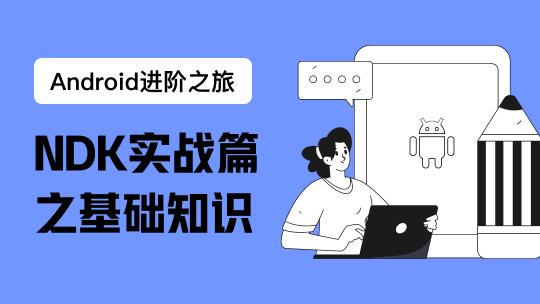第三节 admin Actions
3.1 实现批量操作
在Django admin实现批量操作是比较简单的。
第一步,定义一个回调函数,将在点击对象列表页面上的“执行”按钮时触发(从用户的角度来看的确如此,但在Django内部当然还需要一些检查操作,见下文详述)。它的形式如def action_handler(model_admin, request, queryset)三个参数分别表示当前的modelAdmin实例、当前请求对象和用户选定的对象集。
回调函数和View函数类似,你可以在这个函数做任何事情。比如渲染一个页面或者执行业务逻辑。
第二步(可选),添加一个描述文本,将显示在changelist页面的操作下拉列表中。一般的做法是为回调函数增加short_description属性。如果没有指定将使用回调函数名称。
第三步,注册到ModelAdmin中。在ModelAdmin中和批量操作有关的选项有变量actions和函数get_actions(self, request)两种方式定义,前者返回一个列表,后者返回一个SortedDict(有序字典)。
如actions = ['action_handler']
常用用法是将所有的操作写在actions,在get_actions中再根据request删除一些没有用的操作。下面的代码显示了只有超级管理员才能执行删除对象的操作。
actions = ['delete_selected', ....]
def get_actions(self, request):
actions = super(XxxAdmin, self).get_actions(request)
if 'delete_selected' in actions and not request.user.is_superuser:
del actions['delete_selected']
return actions
还有一种情况,如果操作是通用,可以使用AdminSite的add_actions方法注册到AdminSite对象中,这样所有的ModelAdmin都有这个操作。
3.2 批量操作的Django实现
admin内置了一个全站点可用的批量操作——删除所选对象(delete_selected)。通过阅读相关源代码可以了解在Django内部是怎么实现的。
当用户选定一些对象并选择一个操作,点击执行按钮,发送了一个POST请求,信息如下:
方法/地址
POST /admin/(app_lable)/(module_name)
数据
changelist页面含有一个id为changelist_form的大表单,此时主要数据如下:
action=delete_selected 值为操作回调函数的名称
select_accoss=0
_selected_action=1,2,3 选定对象的PK列表(_selected_action被定义为常量helper.ACTION_CHECKBOX_NAME)
后台对应view
changelist_view
在changelist_view中与action处理有关的代码如下:
# If the request was POSTed, this might be a bulk action or a bulk
# edit. Try to look up an action or confirmation first, but if this
# isn't an action the POST will fall through to the bulk edit check,
# below.
action_failed = False
selected = request.POST.getlist(helpers.ACTION_CHECKBOX_NAME)
# Actions with no confirmation
if (actions and request.method == 'POST' and
'index' in request.POST and '_save' not in request.POST):
if selected:
response = self.response_action(request, queryset=cl.get_query_set(request))
if response:
return response
else:
action_failed = True
else:
msg = _("Items must be selected in order to perform "
"actions on them. No items have been changed.")
self.message_user(request, msg)
action_failed = True
# Actions with confirmation
if (actions and request.method == 'POST' and
helpers.ACTION_CHECKBOX_NAME in request.POST and
'index' not in request.POST and '_save' not in request.POST):
if selected:
response = self.response_action(request, queryset=cl.get_query_set(request))
if response:
return response
else:
action_failed = True
开始的注释已经写的很明白了,如果请求是POST过来的,可能是action和批量编辑的两种操作。在action有内容,POST中没有index和_save参数时被认为是批量操作,后者在批量编辑中使用。
在对批量处理中首先从POST数据得到选定对象的PK值赋值给selected,这是一个list。然后分是否有确认流程分成两种不同的情况
action with no confirmation
在changelist页面提交数据
actions with confirmation
在其他用户自定义页面提交数据
actions=True
必须有操作
同左
helpers.ACTION_CHECKBOX_NAME
可有可无,当然若果没有的将提示没有选择对象,也不会有任何改变
必须存在,因为此时前台的模板页面是用户自己定义的,所以需要保证它必须存在
index 动作所在的表单序号
in POST
not in POST
helper.ACTION_CHECKBOX_NAME在POST即为有确认页面。从上述代码来看二者之间只有在selected==None时,如果没有确认时会提示没有选定对象。
在确认是批量操作且有选定对象就开始调用response_action方法。这个方法的源代码如下;
def response_action(self, request, queryset):
"""
Handle an admin action. This is called if a request is POSTed to the
changelist; it returns an HttpResponse if the action was handled, and
None otherwise.
"""
# There can be multiple action forms on the page (at the top
# and bottom of the change list, for example). Get the action
# whose button was pushed.
try:
action_index = int(request.POST.get('index', 0))
except ValueError:
action_index = 0
# Construct the action form.
data = request.POST.copy()
data.pop(helpers.ACTION_CHECKBOX_NAME, None)
data.pop("index", None)
# Use the action whose button was pushed
try:
data.update({'action': data.getlist('action')[action_index]})
except IndexError:
# If we didn't get an action from the chosen form that's invalid
# POST data, so by deleting action it'll fail the validation check
# below. So no need to do anything here
pass
action_form = self.action_form(data, auto_id=None)
action_form.fields['action'].choices = self.get_action_choices(request)
# If the form's valid we can handle the action.
if action_form.is_valid():
action = action_form.cleaned_data['action']
select_across = action_form.cleaned_data['select_across']
func, name, description = self.get_actions(request)[action]
# Get the list of selected PKs. If nothing's selected, we can't
# perform an action on it, so bail. Except we want to perform
# the action explicitly on all objects.
selected = request.POST.getlist(helpers.ACTION_CHECKBOX_NAME)
if not selected and not select_across:
# Reminder that something needs to be selected or nothing will happen
msg = _("Items must be selected in order to perform "
"actions on them. No items have been changed.")
self.message_user(request, msg)
return None
if not select_across:
# Perform the action only on the selected objects
queryset = queryset.filter(pk__in=selected)
response = func(self, request, queryset)
# Actions may return an HttpResponse, which will be used as the
# response from the POST. If not, we'll be a good little HTTP
# citizen and redirect back to the changelist page.
if isinstance(response, HttpResponse):
return response
else:
return HttpResponseRedirect(request.get_full_path())
else:
msg = _("No action selected.")
self.message_user(request, msg)
return None
该方法对提交的action表单进行验证是否有选定的操作。根据选择的action值获取它的回调函数对象func,之后获取queryset,response = func(self, request, queryset)就开始调用我们的函数了,并返回。
3.3 一个Demo
这是实际项目的一个需求,Django默认删除对象时使用的是级联删除,需要改写成如果有外键引用则不能删除,显示各确认页面。主要步骤:
定义一个新的删除对象回调函数delete_with_ref_check如下:由delete_selected函数改造,源代码可参见django.contrib.admin.actions模块
def delete_with_ref_check(self, request, queryset):
"""
Reform the default action which deletes the selected objects.
if queryset cannot be deleted and display a error page if there are ref objs
source code: django/contrib/admin/actions.py
This action first check if there are objs refing on the queryset.
if True ,then displays a error page which shows objs refing the queryset.
else displays a confirmation page whichs shows queryset
(Note using the same one template named 'delete_selected_ref_confirmation.html')
Next, it delets all selected objects and redirects back to the change list.
"""
opts = self.model._meta
app_label = opts.app_label
# Check that the user has delete permission for the actual model
if not self.has_delete_permission(request):
raise PermissionDenied
# The user has already confirmed the deletion.
# Do the deletion and return a None to display the change list view again.
if request.POST.get('post'):
n = queryset.count()
if n:
for obj in queryset:
obj_display = force_unicode(obj)
self.log_deletion(request, obj, obj_display)
queryset.delete()
self.message_user(request, _("Successfully deleted %(count)d %(items)s.") % {
"count": n, "items": model_ngettext(self.opts, n)
})
# Return None to display the change list page again.
return None
if len(queryset) == 1:
objects_name = force_unicode(opts.verbose_name)
else:
objects_name = force_unicode(opts.verbose_name_plural)
ref_obj_number_info = self.get_ref_obj_number_info(queryset)
if ref_obj_number_info['total'] > 0:
title = u'无法删除'
else:
title = u'删除确认'
redirect_url = urlresolvers.reverse('admin:%s_%s_changelist' %(opts.app_label, opts.module_name), current_app=self.admin_site.name)
context = {
'breadcrumbs': self.breadcrumbs,
'current_breadcrumb': u'删除%s' % self.verbose_name,
'title': title,
'ref_obj_number_info': ref_obj_number_info,
"objects_name": objects_name,
'queryset': queryset,
"opts": opts,
"app_label": app_label,
'action_checkbox_name': helpers.ACTION_CHECKBOX_NAME,
'redirect_url':redirect_url
}
# Display the confirmation page
return TemplateResponse(request, self.delete_selected_confirmation_template or [
"admin/%s/%s/delete_selected_ref_confirmation.html" % (app_label, opts.object_name.lower()),
"admin/%s/delete_selected_ref_confirmation.html" % app_label,
"admin/delete_selected_ref_confirmation.html"
], context, current_app=self.admin_site.name)
delete_with_ref_check.short_description = ugettext_lazy("Delete selected %(verbose_name_plural)s")













